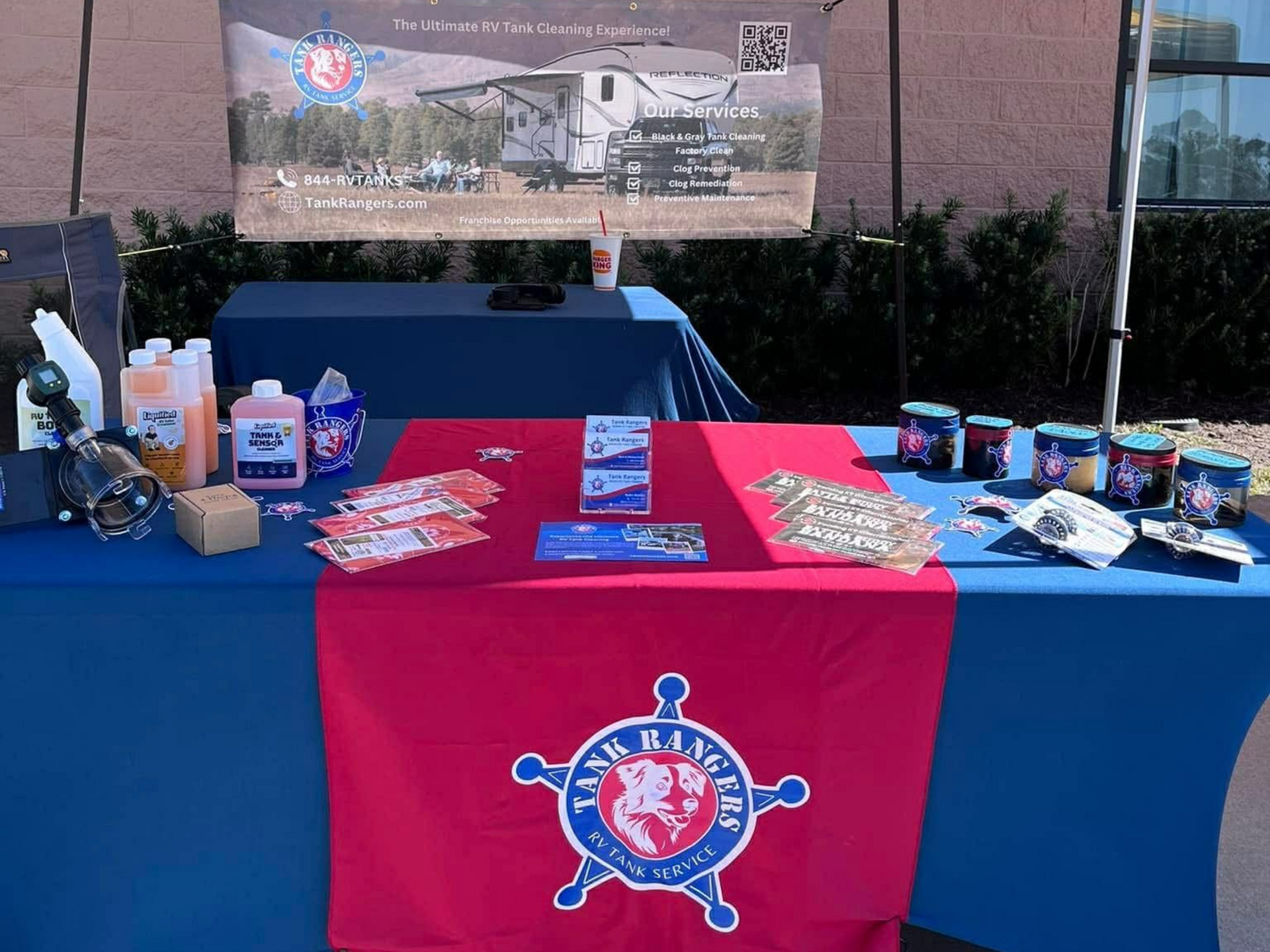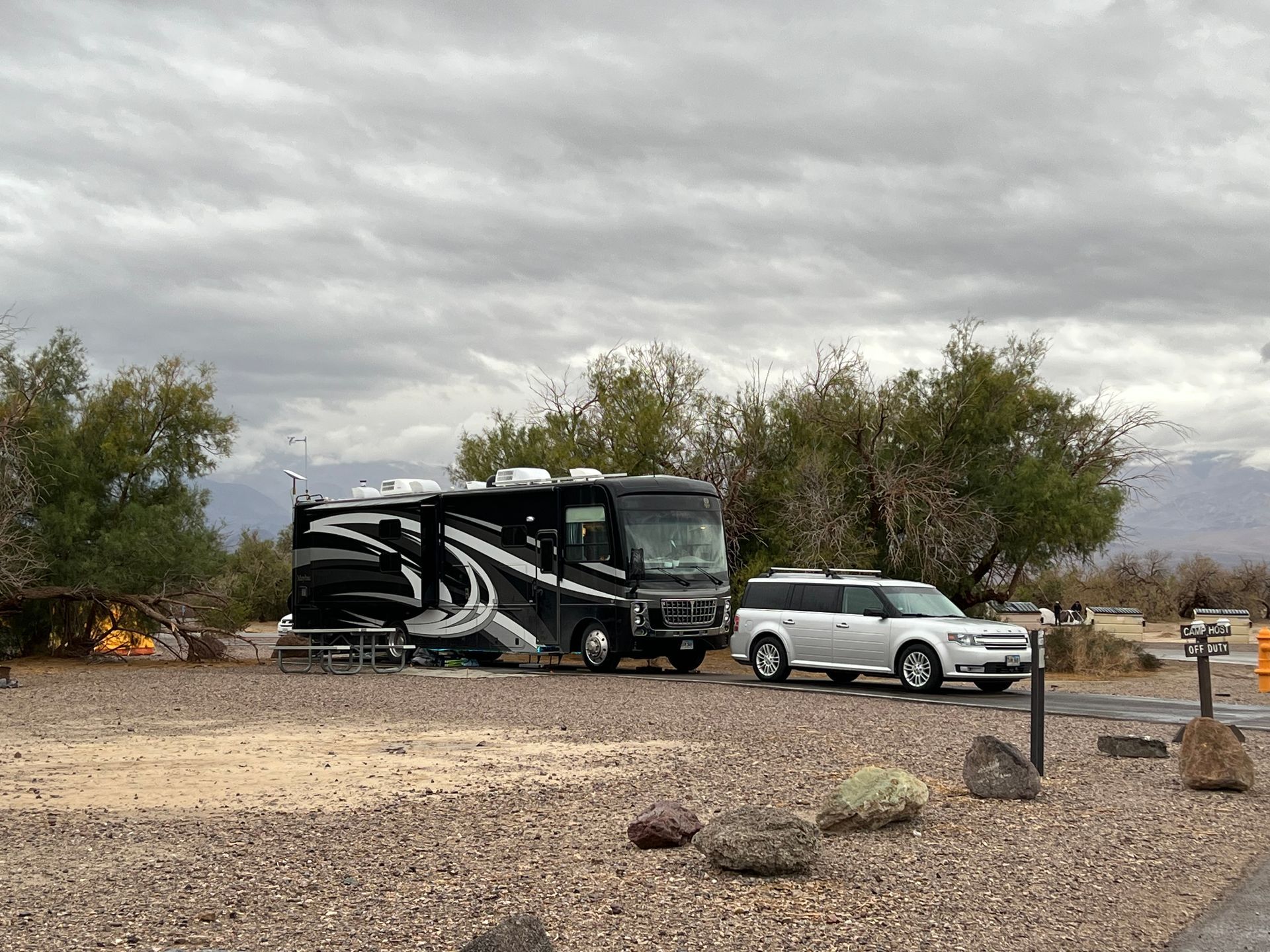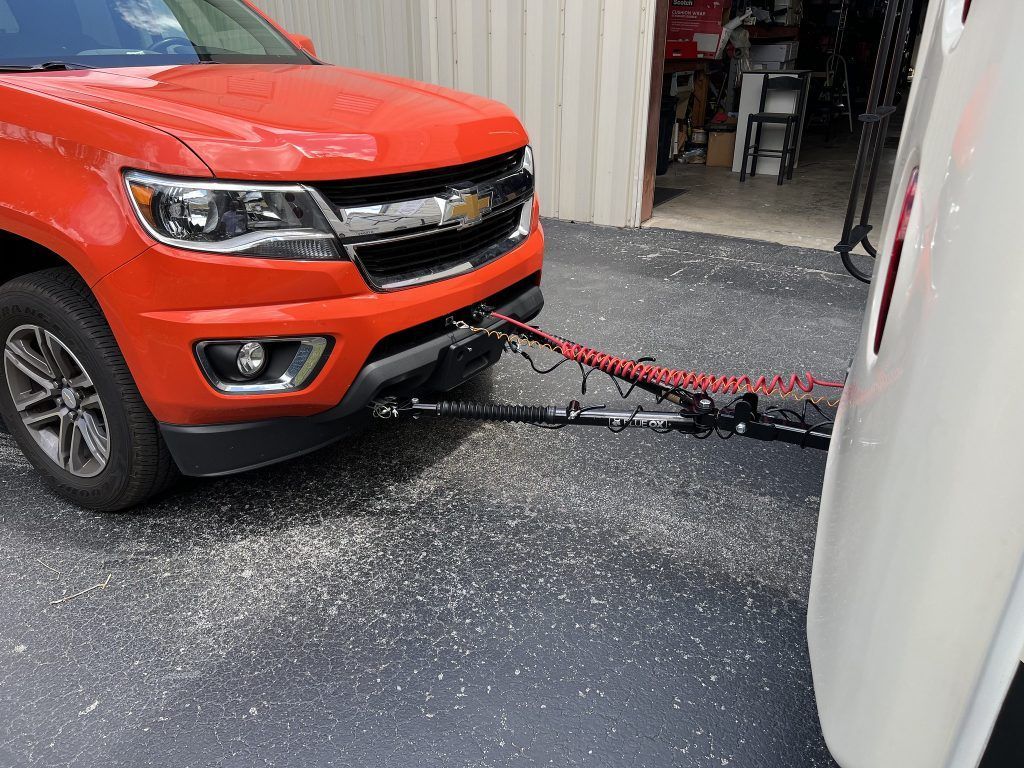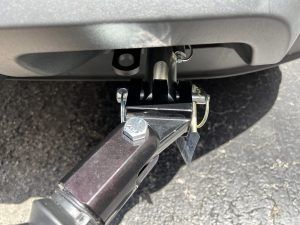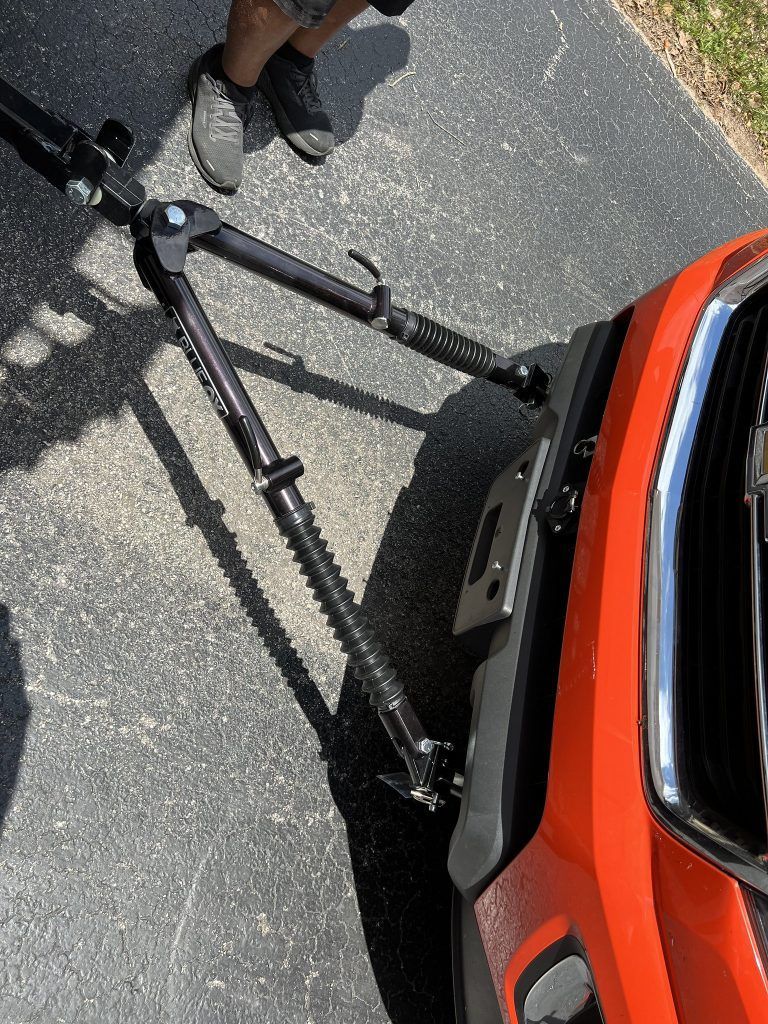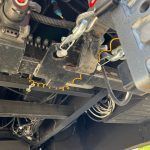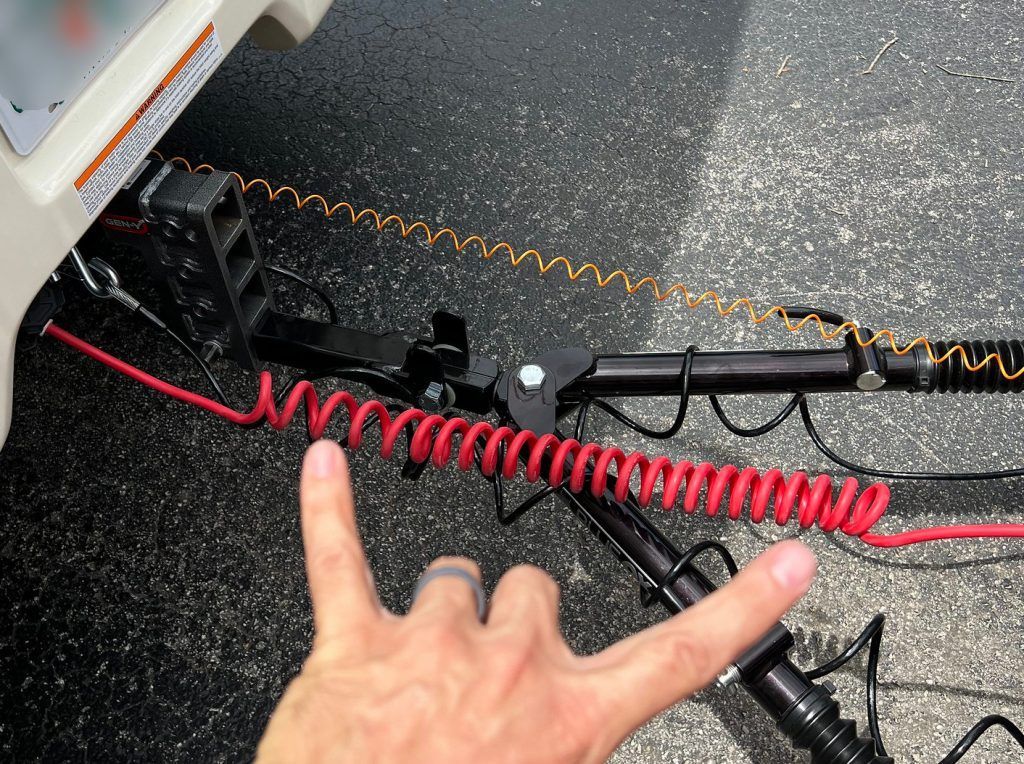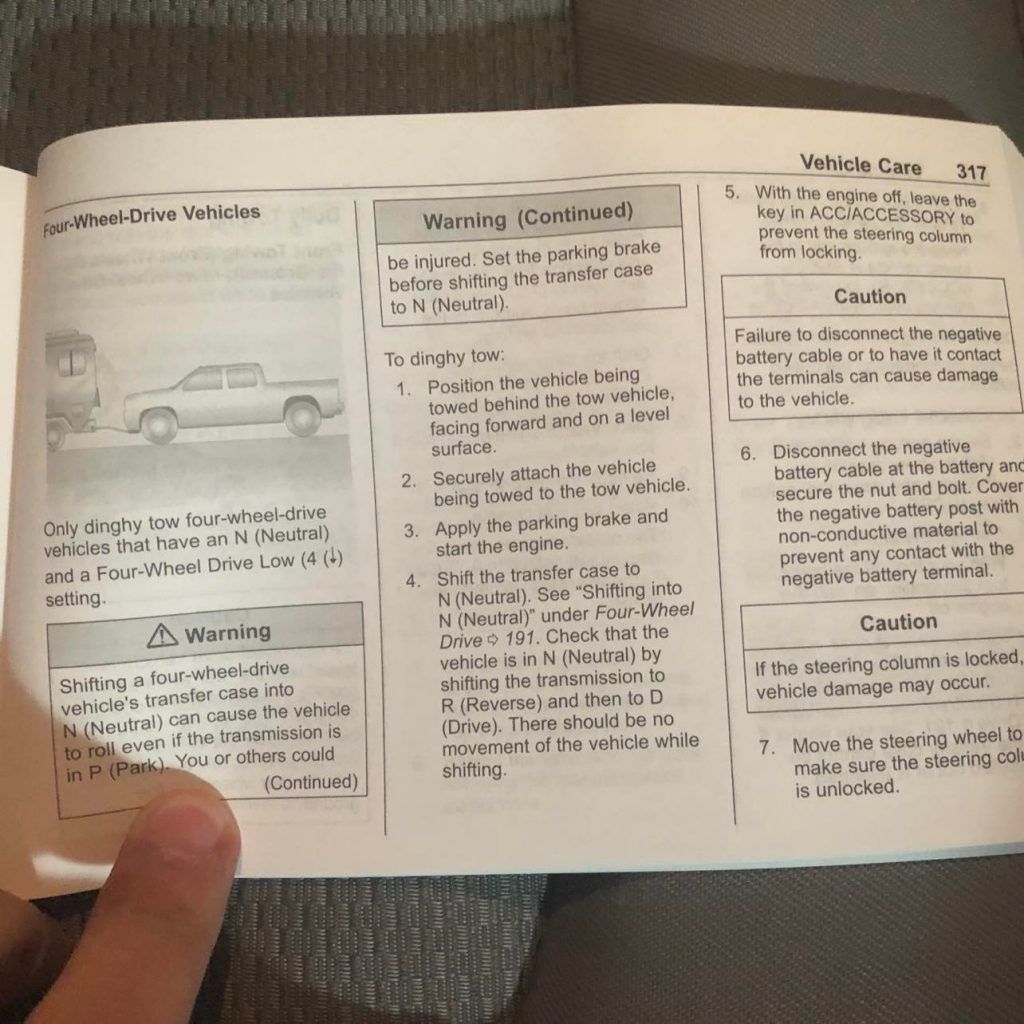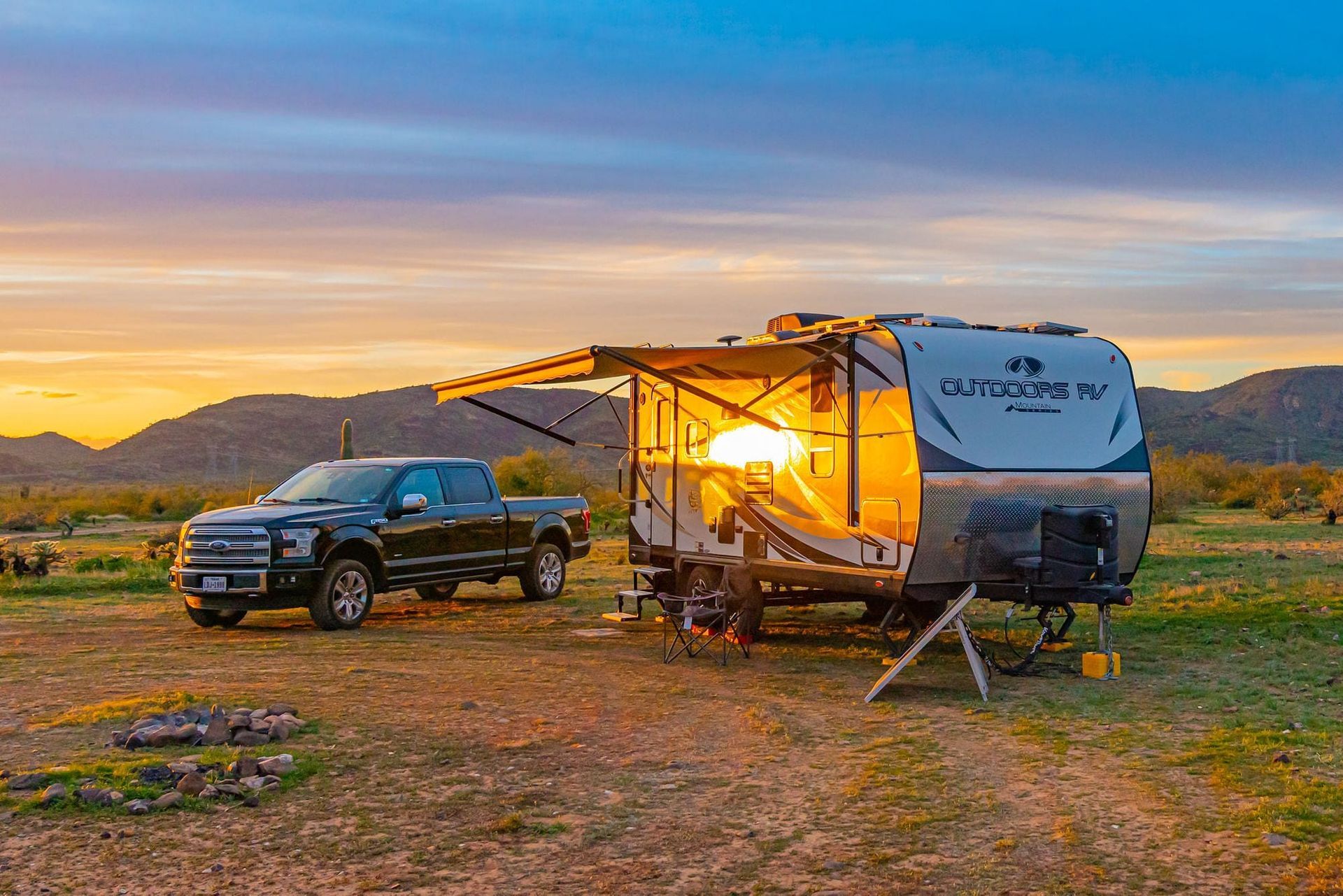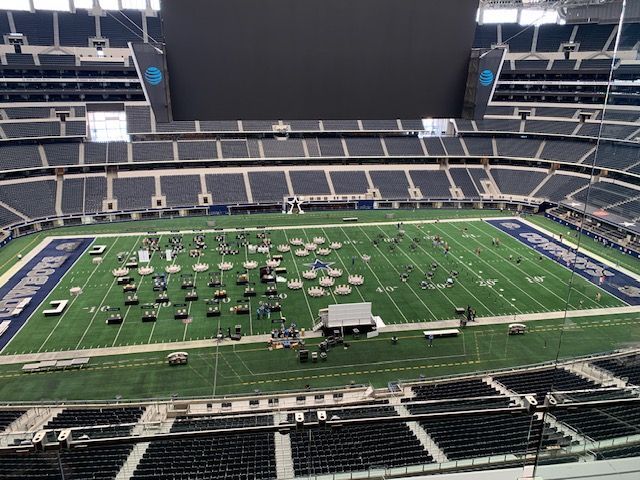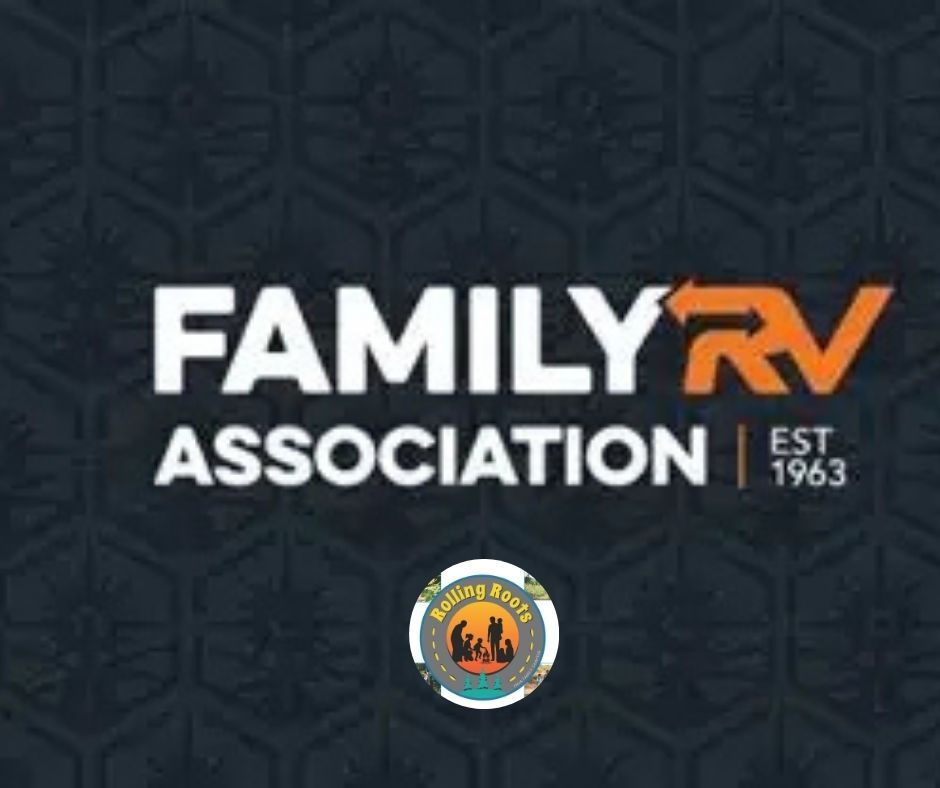Flat Towing Behind a Motorhome
April 6, 2025
We recently made the switch to a class A after 10+ years of pulling trailers (first our pop-up and then our fifth wheels). What an adjustment! The first thing that I knew that I needed to figure out is how to bring a car along with us. I chose to flat tow my car, let me explain why.
Towing a Car/Truck
In RV vernacular , a “towed vehicle” is called a “toad” (cute, right?). Your options for towing are:
- Putting the toad onto/into a trailer and towing that – the pros here are you can carry any car with no regard to having wheels on the ground as well as potential extra storage in or on the trailer. The cons are largely the cost, the extra weight as motorhomes have towing capacities, and the fact that you now have to deal with a trailer at the campsite.
- Putting the toad’s front wheels onto a dolly – a tow dolly is good for front wheel drive cars that can’t be towed with their front wheels on the ground. The dolly lifts them up and carries them, with the car being rolled on the dolly and on its back wheels. The pros here are that you can tow more vehicles this way and it’s a less expensive setup than trailer towing or flat towing. The cons here are that hooking and unhooking the car is more work, you have a piece of equipment that you have to move around the site, and you basically can’t back up.
- Towing the toad with all 4 wheels on the ground (aka 4-down) – for some cars, they’re able to be pulled with all 4 wheels on the ground behind of another vehicle. You absolutely have to check the owners manual to verify they can be flat towed and the requirements for doing so ( literally, trust no other source of information ). The pros here are that you have the easiest method of connecting the car and you don’t have extra equipment around at the campsite. The cons here are the cost, the fact that some parts of the installation require modifications to the vehicle (aka parts you can’t reuse if/when you change toads), and the ability to DIY largely is on your mechanical know-how and comfort level.
My decision was to flat tow. I liked the ease of hooking up, the fact that the toad tracks true behind the RV, and that I didn’t have extra equipment that I had to deal with around the campsite. But, I do know that this means I have to hire out the work to get my toad setup because simply reading the instructions had my head-spinning; I knew that I needed to take the toad to the professionals. My work was done by the Hitching Post in Ocala, FL. I’m very happy with their work and would happily go back to them again. (Note, I get no compensation for that little plug!)
Toad Options
It’s probably fair to say that Jeeps are the most common towed vehicles out there. But there are a ton of other options. My front-wheel drive Chevy Traverse was flat towable and we ended up buying a Chevy Colorado pickup truck because we wanted a truck bed due to my sewer bladder and the possibility for spillage in a SUV sounded terrible.
There are a few guides that can get you started, but see my comments about not trusting them as the 100% truth. To get that, you need check the Owners Manual .
Toad Weight/Motorhome’s Tow Rating
Before we delve too far into the details about towing anything behind of the motorhome, you need to be mindful that the motorhome will have a tow rating. This is typically listed in online specifications and can range from a couple thousand pounds up to 10,000 or more depending on the type of motorhome that you have. This number is important and must exceed the weight of your fully loaded tow vehicle.
One thing to be careful with , in some smaller motorhomes, there is an overlap between the motorhome’s maximum weight (called the gross vehicle weight rating or GVWR), the motorhome’s tow rating, and the motorhome’s maximum combined weight rating (called the gross combined weight rating or GCWR). In this case, you either need to carry less in the motorhome and not max it out or you need to adjust your maximum toad weight down.
Let’s play a for instance game with totally made up numbers for illustrative purposes. Say you have a motorhome with a combined maximum weight rating of 24,000 pounds, a tow rating of 5,000 pounds, and maximum weight rating of 20,000 pounds. ( Confused yet? ) If you have the motorhome at it’s maximum weight (GVWR of 20,000 pounds) and you add a 5,000 pound toad, you will be over the motorhome’s maximum combined weight rating (GCWR of 24,000 pounds) because (20,000 + 5,000 = 25,000). You don’t want to exceed any individual rating and will need to decrease one or more of them (i.e. less stuff in the motorhome or lighter toad).
Your Owners Manual
Your owners manual is the gospel truth on your vehicle. Don’t trust the Internet, websites, or magazines for what you can or cannot tow and how. There are subtle differences in models that might not be apparent. For instance, my Colorado is flat towable but if it was the ZR1 model, it’s not.
Equipment Required to Flat Tow
There is a bit of beautiful simplicity and complexity all at the same time to flat towing. You need a couple of basic components, first you need a mechanism for connecting the vehicle to the motorhome; then you need a way of activating the brakes; and finally, you need a method of activating the lights on the toad to reflect turns, brakes, etc.
Let’s break them down into their pieces. Each piece has multiple ways of accomplishing it and I’m not saying my way is how everyone should do it. Just that it works for me and now that we’ve been doing it a few months, I’ll share what I would/wouldn’t change.
Connection Between RV and Toad
Baseplate
On the toad-side of things, you need to install a baseplate. A baseplate is a custom fitted piece that attaches to the tow vehicle and gives the RV something to connect to. The big names here are BlueOx or RoadMaster.
The base plate is going to be specific to your vehicle + potentially even model. The baseplate manufacturer websites will have a “my vehicle” look up. An alternative to baseplates are custom bumpers and attachments but this goes beyond my area of expertise. If you’re going to go this route, make sure that you ensure the attachment is well affixed to the vehicle and isn’t going anywhere.
Tow Bar
On the RV-side of things, you need a tow bar. These generally connect to the hitch on the motorhome and have attachments to connect the baseplate. Again, BlueOx and RoadMaster are big names here. I opted for a BlueOx Ascent , though I did have a tech tell me that he prefers steel versions because they last longer. You generally can mix and match baseplates/towbars between BlueOx and RoadMaster, but you might need to change specific connection points. I opted for BlueOx all around for simplicity and consistency.
Your tow bar should come with safety cables. These are to help keep the motorhome and towed vehicle together in the event that the tow bar fails. If it doesn’t, you’ll need to buy them separately.
Speaking of the tow bar, you want them to be able parallel with the ground with up to 1 1/2″ difference between the mounting point on the toad. This means that you may need a drop hitch on the motorhome. I needed about 7 1/2″ and opted for this Gen Y Mega Hitch.
Brakes
In most states in the USA (and I’m guessing other countries), a brake system is require to actuate the toad’s brakes when you use the brakes in the motorhome. There are weight cut-offs for when they’re required vs. not, but in my (not so) humble opinion, it’s just the right thing to have and use.
This is either an installed system like the RoadMaster Invisibrake or a portable system like the BlueOx Patriot or the RVi Brake system. I opted for a portable system just because it was easier of an install and if I sell this truck, I can take it with me. It does require an always on 12v connection*. Now, a few months down the road of traveling nearly weekly, I do kind of wish I had opted for a hard-plumbed installation for one less step setting up the truck for towing.
Emergency Breakaway
In the event your towed vehicle ever catastrophically disconnects from your motorhome, you need the brakes to get activated to bring it to a stop. The emergency breakaway switch does just that and works in conjunction with your braking system.
Note, you do not want to connect the emergency breakaway cable to the same spot as your safety chains. In fact, ideally, you want it to be on the RV itself and not the hitch at all.
Lights Integration + Wiring Connection
You’ll then need to integrate the lights on your toad so that when you use your brakes or turn signal, they work. There are diode kits for this. I opted for an installer to do this work for me. The installer said that the kits are fine for DIY but the diodes often burn out. This was beyond my area of expertise, so I nodded and let them do their thang.
For the lights to be controlled by the motorhome, you need a wire connection between them. On the motorhome side, it has a 7-pin connection and the tow vehicle got a smaller 6-pin connection. I’m not exactly sure they’re different, but it seems standard enough that they had a ready-made 7-to-6 pin cord.
Tow Preparation Process
Your owners manual will tell you what you need to do in order to prepare the vehicle for flat towing behind an RV. In my case with my Chevy Colorado ( the steps specific to the Colorado are in italics ), it’s:
- Connect the tow bar
- Connect the safety chains (be sure to criss-cross them)
- Connect the 7-to-6 pin umbilical cord
- Connect the emergency breakaway cable
- Start the truck
- Reverse the truck to lock the tow bar arm
- Turn the wheel in the direction of the side that did not lock
- Put the gear shift into neutral
- Switch the transfer case to neutral
- Put the truck in reverse or drive to ensure the drivetrain is in neutral
- Return the gear shifter to Neutral
- Turn truck off (well, specifically to accessory)
- Verify the steering wheel isn’t locked
- Disconnect the battery*
- Install the braking system + follow its initialization procedure
In our Colorado, the key stays in the ignition. We will lock the doors with the driver’s door open before we disconnect the battery. We also verify the second set of keys is NOT in the truck before locking the door.
When disconnecting, you essentially follow the steps in reverse. I’ve found that it helps to have the truck in neutral in order to remove the pins for the tow bar (being mindful that the truck won’t roll away).
* Because I disconnect the battery, I needed a 12v connection installed that bypasses the disconnect and is always hot. The installer put one in the driver’s area for me.
Other blogs you might like...

